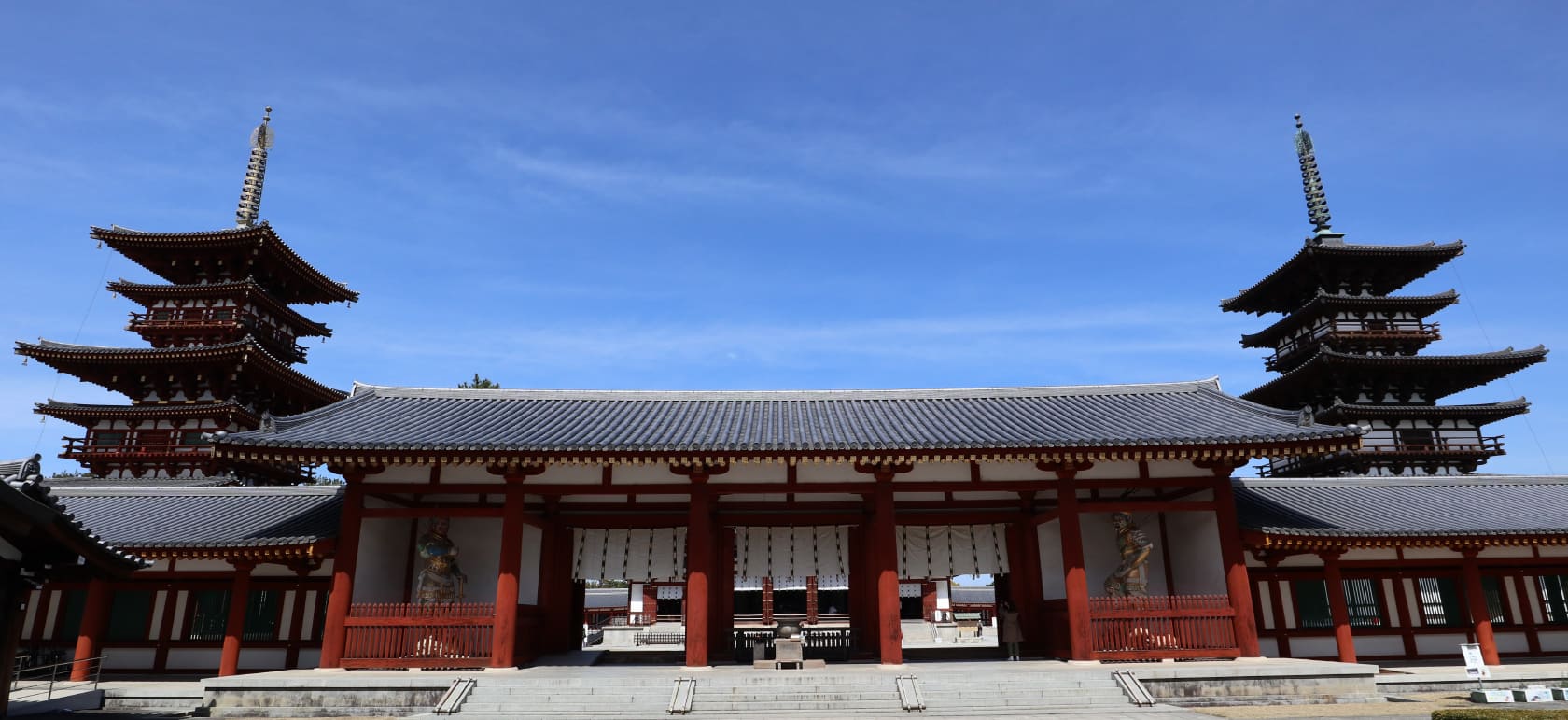Introduction
Yakushiji Temple is one of the oldest Buddhist temples in Japan, constructed in the 7th century and revered as the birthplace of Japanese Buddhism. The temple’s meticulous symmetrical layout, unique architectural artistry, and rich historical and cultural significance attract a multitude of visitors seeking to immerse themselves in this sacred site. Whether you’re a traveler passionate about history and culture or a devotee seeking a religious experience, Yakushiji offers an unforgettable journey.
Key Highlights
- One of the oldest Buddhist temples in Japan, dating back to the 7th century
- Symmetrical architectural layout with a refined and distinctive structure
- Enshrines the Yakushi Triad, a masterpiece of Japanese Buddhist art
- The East Pagoda, built in 730 AD, is the only ancient structure that has survived
- The recently constructed Genjo-sanzoin Garan is a pilgrimage site
- Conveniently located in the heart of Nara, with easy access
Historical Background
Yakushiji Temple was founded in the 7th century at the behest of Emperor Tenmu, who ordered its construction to pray for the recovery of his ailing empress. Believing that the Yakushi Nyorai (Bhaisajyaguru) bodhisattva had the power to heal, the emperor established this temple named after the “Healing Buddha.”
Over the centuries, Yakushiji has evolved and been rebuilt, cementing its status as one of the seminal temples in Japanese Buddhism. The temple’s architecture adheres to a “symmetrical” design principle, with the main hall and lecture hall connected through a central axis, flanked by two pagodas on either side, creating an overall harmonious and meticulous ambiance. The Yakushi Triad enshrined within the main hall is a renowned masterpiece of Japanese Buddhist art.
Key Attractions
1. Main Hall (Kondo)
The main hall is the core structure of Yakushiji Temple. Rebuilt in the 1970s after multiple destructions, the current main hall houses the revered Yakushi Triad – the Yakushi Nyorai (Bhaisajyaguru) flanked by the Bodhisattvas of Wisdom (Manjushri) and Compassion (Samantabhadra). This renowned Buddhist art piece, embodying skill, wisdom, and great compassion, is widely regarded as a quintessential representation of Japanese Buddhist art. The hall also enshrines numerous other precious Buddhist statues and ritual implements.
2. East Pagoda (Tourou)
The East Pagoda is the oldest structure in Yakushiji, dating back to 730 AD. While it appears to have six stories, the pagoda is actually only three stories tall. The pagoda’s distinctive black hue, weathered by the passage of time, imbues it with a profound sense of history. It is one of the few ancient structures in Yakushiji that have survived the many fires that have devastated the temple over the centuries.
3. Genjo-sanzoin Garan
Genjo-sanzoin Garan is a recently constructed pilgrimage complex within Yakushiji, built in 1991. The main building is an octagonal hall that enshrine the relics of the renowned Chinese monk Xuanzang (Genjo-sanzo), famous for his extensive travels to India and Central Asia. Behind the octagonal hall, a dedicated building displays paintings by the celebrated Japanese artist Hirayama Ikuo, depicting scenes from Xuanzang’s journeys that inspired his work. However, the Genjo-sanzoin Garan complex is closed for about half the year, so it’s essential to check the opening schedule before visiting.
Best Time to Visit
Yakushiji Temple is open year-round, with visiting hours from 8:30 am to 5:00 pm (last entry at 4:30 pm). The best time to visit is on a clear day, allowing you to fully appreciate the harmonious integration of the temple’s architecture and its surrounding gardens. Spring, with its vibrant cherry blossoms, and autumn, with its stunning maple leaves, are particularly enchanting seasons. If you’re interested in religious rituals, an early morning visit can help you avoid the peak visitor hours.
Getting There
Yakushiji Temple is conveniently located in the heart of Nara. From Kintetsu Nara Station, take the Kintetsu Nara Line to Yamato-Saidaiji Station, then transfer to the Kintetsu Kashihara Line to reach Nishinokyo Station, which is right next to the temple. The entire journey takes approximately 25 minutes and costs 300 yen.
Alternatively, you can take bus numbers 72, 78, or 98 from either Kintetsu Nara Station (20 minutes, 270 yen) or JR Nara Station (15 minutes, 270 yen) and get off at the Yakushiji (薬師寺) or Yakushiji Chushajo (薬師寺駐車場) bus stops. For the return trip, you can catch bus numbers 72, 77, or 97 from the Nishinokyoeki bus stop or the Yakushiji Chushajo bus stop.
Hours and Admission
Hours:
- Main temple: 8:30 am to 5:00 pm (last entry at 4:30 pm)
- Genjo-sanzoin Garan: Closed from mid-January to February, July to mid-September (except Obon in mid-August), and December
Admission:
- 1,100 yen (800 yen when Genjo-sanzoin Garan is closed)
Visitor Tips
- Carefully admire the Yakushi Triad and other exquisite Buddhist artworks within the main hall.
- Climb the East Pagoda to enjoy a panoramic view of the temple grounds and feel the weight of history.
- If time allows, visit the Genjo-sanzoin Garan to appreciate Hirayama Ikuo’s religious-themed paintings.
- Stroll through the serene temple gardens and immerse yourself in the harmonious Zen atmosphere.
- Plan your visit to avoid peak hours for a more peaceful and contemplative experience.
Official Website
Conclusion
Undoubtedly, Yakushiji Temple is a renowned Buddhist sanctuary in Japan. This historic temple, not only the birthplace of Japanese Buddhism, but also a testament to the grandeur of its architectural prowess, the brilliance of its artistic treasures, and the profound Zen spirituality that pervades its very essence, offers an unparalleled experience for visitors. Whether you’re captivated by history and culture or seek a religious pilgrimage, Yakushiji will undoubtedly leave an indelible mark on your journey.
